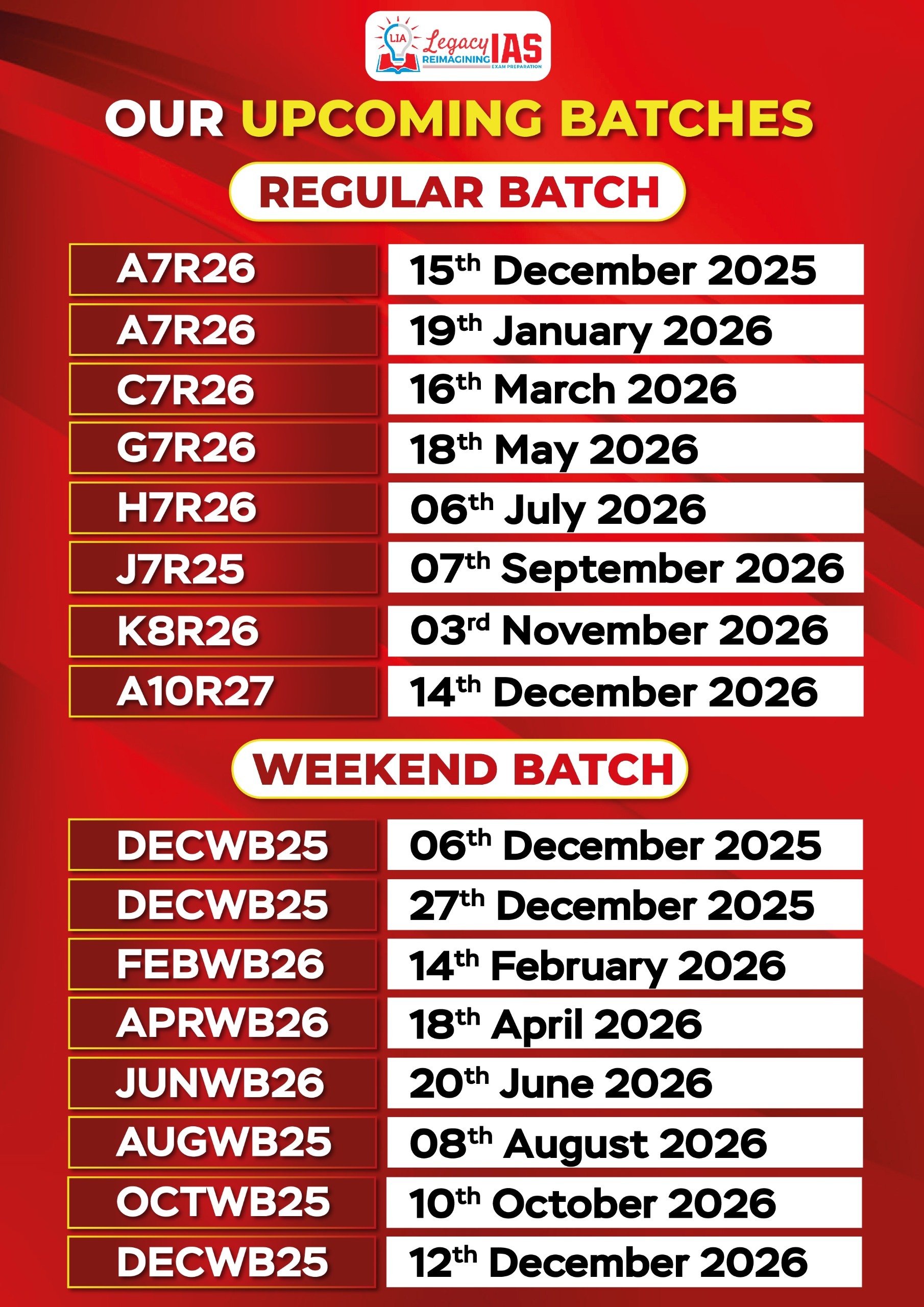Content:
- World Health Day 2025
- The Waqf (Amendment) Bill, 2025: An overview of the Act vs Bill
World Health Day 2025
Theme: “Healthy Beginnings, Hopeful Futures”
Date: 7th April 2025
Focus: Maternal and newborn health
Relevance : GS 2(Health)
Government Vision
- Reaffirmed commitment to quality and accessible healthcare.
- Focus on maternal & child health, digital health, wellness, disease elimination, and mental health.
Key Achievements in Maternal & Child Health
- Maternal Mortality Rate (MMR):
↓ from 130 (2014–16) to 97 (2018–20)
⇒ 83% reduction since 1990 (vs global 42%)
- Infant Mortality Rate (IMR):
↓ from 39 (2014) to 28 (2020)
- Neonatal Mortality Rate (NMR):
↓ from 26 (2014) to 20 (2020)
- Under-5 Mortality Rate (U5MR):
↓ from 45 (2014) to 32 (2020)
Major Maternal & Child Health Interventions
- Maternal Death Surveillance and Response (MDSR):: Tracks maternal deaths & implements corrective action.
- Mother and Child Protection (MCP) Card & Safe Motherhood Booklet: Info on pregnancy health & schemes.
- Reproductive and Child Health (RCH) Portal: Digital tracking of pregnant women & newborns.
- Anaemia Mukt Bharat (AMB): Testing & prevention in pregnant women & teens.
- Birth Waiting Homes: In remote/tribal areas for safe deliveries.
- Village Health, Sanitation & Nutrition Day (VHSND) & Outreach Camps: Grassroots delivery of maternal services.
Access to Quality Health Services
- Ayushman Arogya Mandirs (AAMs):
1.76 lakh centers;
107.1 cr BP & 94.5 cr diabetes screenings;
5.06 cr wellness sessions (incl. yoga). - NQAS-Certified Facilities:
17,000+ public health institutions.
Digital Health Initiatives
- Ayushman Bharat Digital Mission (ABDM):
- Unified digital health ecosystem
- 76 cr Ayushman Bharat Health Accounts (ABHA) accounts
- 5.95 lakh+ verified professionals
- 3.86 lakh+ verified facilities
- 52 cr+ linked health records
- U-WIN:
- Digital platform that streamlines and tracks immunization for pregnant women and children (0–16 years)
- 7.90 cr beneficiaries
- 1.32 cr sessions, 29.22 cr doses
- eSanjeevani:(India’s National Telemedicine Service)
- 36 cr+ teleconsultations
- 130+ specialities, 17,051 hubs, 1.3 lakh spokes
Disease Elimination & Control
- Malaria:
- ↓ 69% cases, ↓ 68% deaths (2017–2023)
- Exited WHO’s High Burden to High Impact (HBHI) group in 2024
- Trachoma: Eliminated in 2024 (WHO-certified)
- Measles-Rubella:
- 50 districts measles-free, 226 rubella-free (2024)
- TB (NTEP):
- ↓ from 237 to 195 cases/lakh (2015–2023)
- TB deaths ↓ from 28 to 22/lakh
- Missing cases ↓ 83%
- 2.5 lakh Ni-kshay Mitras supporting 15 lakh patients
- Kala-azar: Eliminated in Oct 2024 in all endemic blocks
Affordable Healthcare
- AB-PMJAY:
- 55 cr beneficiaries
- ₹5 lakh/family insurance
- 40 cr Ayushman cards
- 8.5 cr+ hospital admissions
- 31,846 empanelled hospitals (17,434 govt, 14,412 pvt)
- ASHA/Anganwadi workers included
- 25 lakh+ Ayushman Vay Vandana Cards issued
Mental Health: Tele-MANAS
- 53 cells across 36 States/UTs
- 20+ lakh calls handled
- ₹230+ cr allocated (last 3 years)
- 440+ Rehabilitation/Halfway Homes (as of Apr 2025)
Conclusion
India’s efforts in maternal health, disease elimination, digital health, and inclusive access reflect its push toward Universal Health Coverage and health equity — aligned with SDG 3 and the 2030 agenda.
The Waqf (Amendment) Bill, 2025: An overview of the Act vs Bill
Introduction
- The Waqf (Amendment) Bill, 2025 updates the Waqf Act, 1995 to improve efficiency, reduce disputes, and modernize waqf property management.
- The Mussalman Wakf (Repeal) Bill, 2025 seeks to repeal the outdated Mussalman Wakf Act, 1923 to eliminate redundancy and legal confusion.
Relevance : GS 2(Polity , Constitution , Governance)
Major Issues in Existing Framework
- Irrevocability of Waqf: The principle “once a waqf, always a waqf” has caused complex legal disputes (e.g., Bet Dwarka).
- Legal Disputes & Mismanagement:
- Illegal occupation of Waqf land.
- Delays in surveys and property registration.
- Poor governance and large-scale litigations.
- No Judicial Oversight:
- Tribunal decisions are final, with minimal judicial appeal.
- Reduces accountability and legal recourse.
- Incomplete Surveys:
- Surveys pending or not started in several states (e.g., Gujarat, UP, Uttarakhand).
- Poor coordination with Revenue Departments.
- Misuse of Section 40:
- Private properties wrongly declared as waqf.
- Only 8 out of 30 States/UTs provided data; 515 such properties identified.
- Constitutional Validity Questioned:
- Law applies only to Muslims, with no equivalent for other communities.
- PIL filed in Delhi HC questioning Article 14 violation.
Key Provisions of the Waqf (Amendment) Bill, 2025
| Feature | Waqf Act, 1995 | Amendment (2025) |
| Name of Act | Waqf Act, 1995 | Unified Waqf Management, Empowerment, Efficiency, and Development Act |
| Formation of Waqf | Via declaration, user, endowment | Removes “user”, mandates ownership & practice by donor, protects women’s inheritance |
| Government Property as Waqf | No clarity | Gov. property can’t be waqf; disputes handled by Collector |
| Power to Determine Waqf | Held by Waqf Boards | Removed |
| Survey Responsibility | Survey Commissioners | Empowered Collectors under revenue laws |
| Central Waqf Council Composition | All Muslim members | Includes 2 non-Muslims, MPs, judges; 2 Muslim women mandatory |
| Waqf Board Composition | Elected Muslim members | State can nominate non-Muslims; inclusion of Shia, Sunni, Bohra, Agakhani, BCs, 2 Muslim women |
| Tribunal Composition | Judge, Muslim law expert, state officer | Removes Muslim law expert; adds joint secretary |
| Appeals on Tribunal Orders | Tribunal decisions final | Appeals allowed in HC within 90 days |
| Audit & Central Powers | State audits only | CAG/designated audit by Centre; rules on registration & publication |
| Separate Boards for Sects | Shia-Sunni only if >15% share | Also includes Bohra & Agakhani sects |
| Inclusivity | Muslim-majority boards | Mandates non-Muslim and women representation |
Impact of Mussalman Wakf (Repeal) Bill, 2025
- Removes the outdated 1923 Act, streamlining legal framework.
- Eliminates duplication/confusion with the Waqf Act, 1995.
- Ensures one uniform law governing all waqf properties in India.
- Improves legal clarity, transparency, and administrative efficiency.
Conclusion
- The 2025 reforms modernize waqf governance with better legal recourse, inclusivity, and government oversight.
- Enhances transparency by improving surveys, registration, and accountability.
- Introduces progressive provisions like women representation, non-Muslim inclusion, and removal of misuse-prone clauses.
- Marks a significant shift towards a balanced, secular, and efficient Waqf management system.



